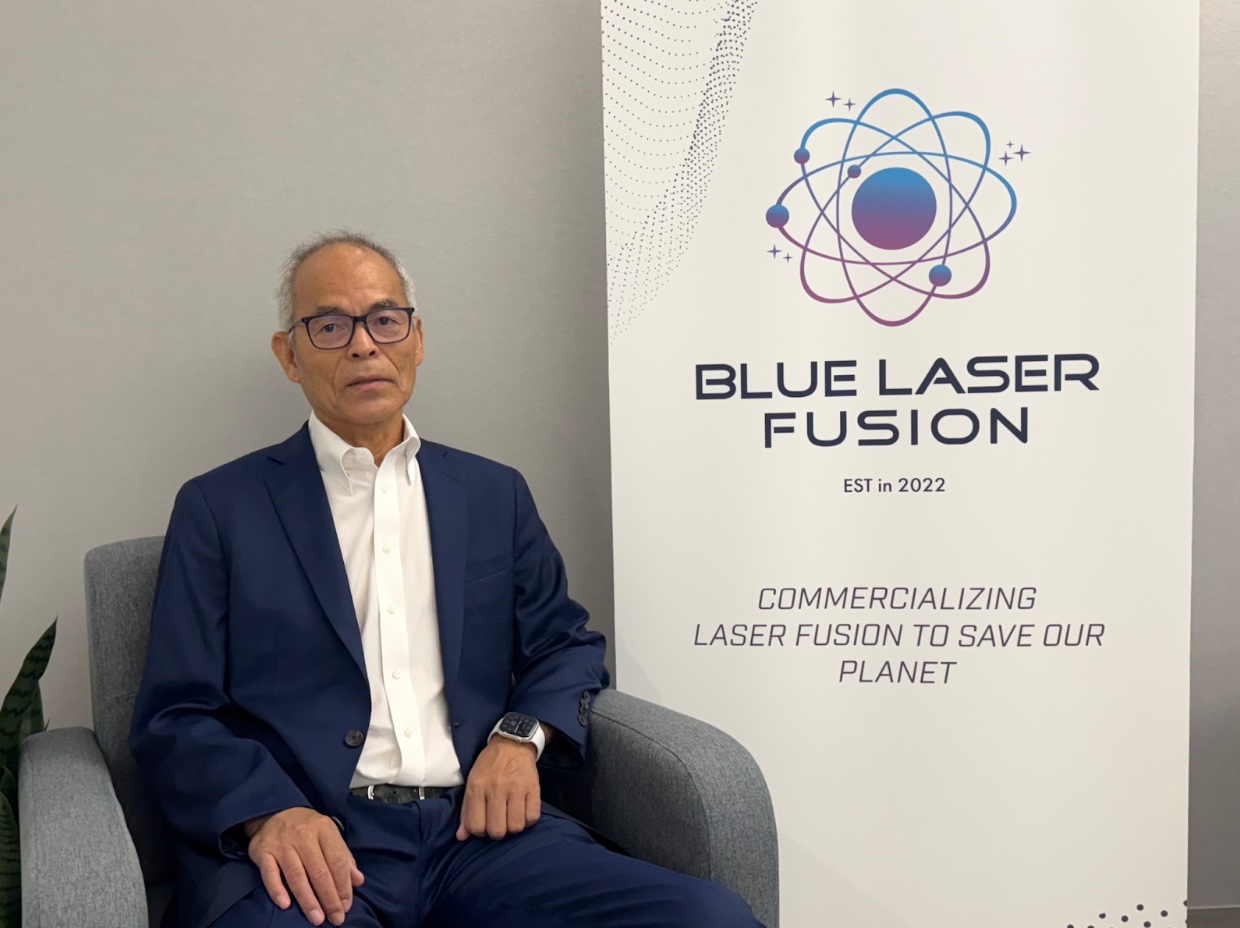
Nobel Prize–Winning UCSB Professor Shuji Nakamura’s Company Developing New Laser-Powered Tech That Could Lead to Efficient, Endless Source of Energy
Blue Laser Fusion in Goleta Looks to Harness Nuclear Fusion’s Powerful Potential
By Ella Heydenfeldt
Fri Oct 17, 2025 | 4:45pm
The words “clean energy” crop up frequently, but rarely does it mean two things: truly clean, limitless energy. That is the dream of nuclear fusion, the same process that powers the sun. No emissions, no meltdown risk — just efficient, endless power. Science has yet to crack the code on how to harness this power, but a Goleta startup called Blue Laser Fusion may have the technology to make it happen.
The company’s founder, UCSB’s own Professor Shuji Nakamura — the Nobel Prize–winning scientist who already changed the world once by inventing white LED — is the brains behind the operation.
“Using blue LED technology, we developed a totally new idea to create a new laser power,” Nakamura explained. “For the past 70 years, fusion was never achieved. So this is a big breakthrough. Using our technology, we can generate our own energy continuously.”
In 2022, researchers at the National Ignition Facility (NIF) at Lawrence Livermore National Lab achieved the first controlled “fusion gain” — when a laser-induced reaction produces more energy than it takes to trigger it. It was a profound scientific milestone, but far from becoming the primary energy source of our society.
While amazing, there is a flip side, according to Morgan Pattison, a special advisor at Blue Laser Fusion, who worked under Nakamura as a graduate student. “It’s really a profound demonstration,” he said. “But the laser they’re using can only generate enough energy once per day. To do this for practical electricity generation, you need to do it thousands to millions of times a day.”
That’s where Blue Laser Fusion comes in. Blue Laser Fusion innovations incorporate a high-pulse energy laser with a fusion energy target chamber. In layman’s terms, the laser is the hammer breaking into a tiny pellet of hydrogen isotopes (atoms). The chamber is the anvil, keeping everything contained. The result? Genuinely clean, secure fusion energy. The difference? It’s on demand.
“Shuji was like, ‘Oh, I’ve already changed the world once; I want to do it again,’” Pattison said with a laugh. “He invented this new laser concept, which would be an advancement on the laser at NIF. It’s a pure energy hardware startup — clean tech in the truest sense.”
As far as the fear that may arise when one hears the word “nuclear,” that would be misplaced. “There’s no chance of a runaway reaction,” Pattison said. “There’s no uranium involved — just hydrogen isotopes. It’s fusion, not fission — it’s safe.”
Put simply, the laser compresses two light hydrogen atoms — isotopes — until they fuse into helium, releasing energy in the process. “You’ve got to do it like the sun,” Pattison explained. “If you overcome their natural desire not to fuse, that missing mass turns into energy. Einstein’s E=mc², right there.”
So, how close is this to being the power source of Santa Barbara? “There is still a lot of work to be done, a lot of R&D [research and development],” Pattison said. Scientists at Blue Laser Fusion have to scale up continuously until they have a big enough laser and enough lasers to construct a one-gigawatt pilot fusion power plant, which, according to their website, should be done by 2032.
Once the power plant is up and running, its primary customers will be utilities or government agencies, according to Pattison. “The ultimate customer would be the electricity consumer, just like with any other electrical supply — solar, wind, coal, tidal, nuclear, etc.,” he said.
The draw makes sense, “The upside is massive — trillions of dollars and many environmental benefits,” Pattison stated. “It’s a unique situation but is going to require a sustained effort to get there.”